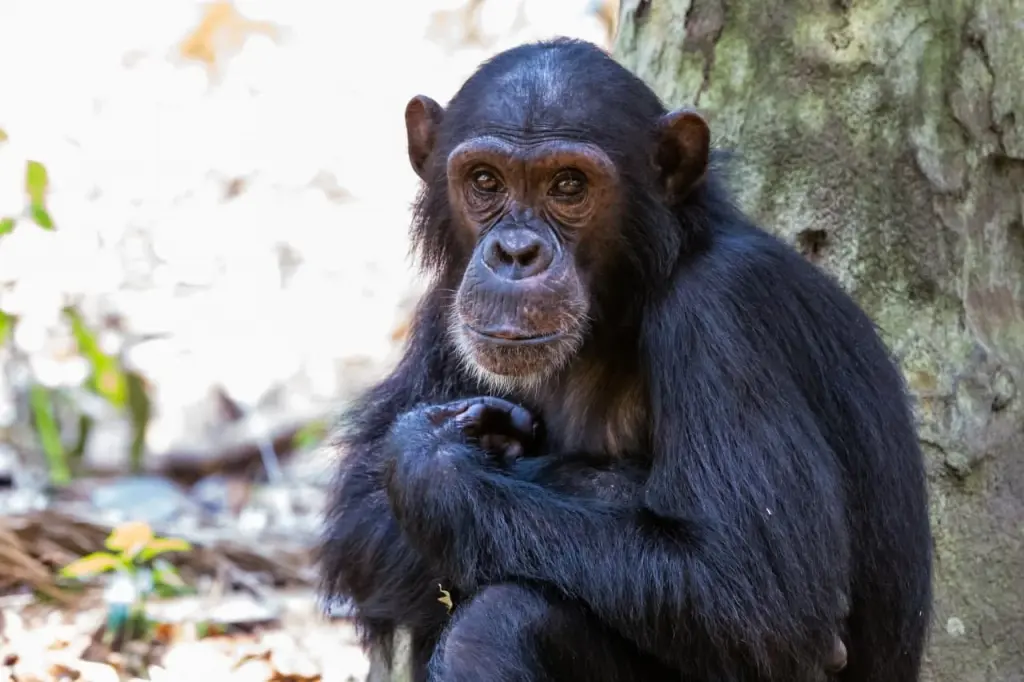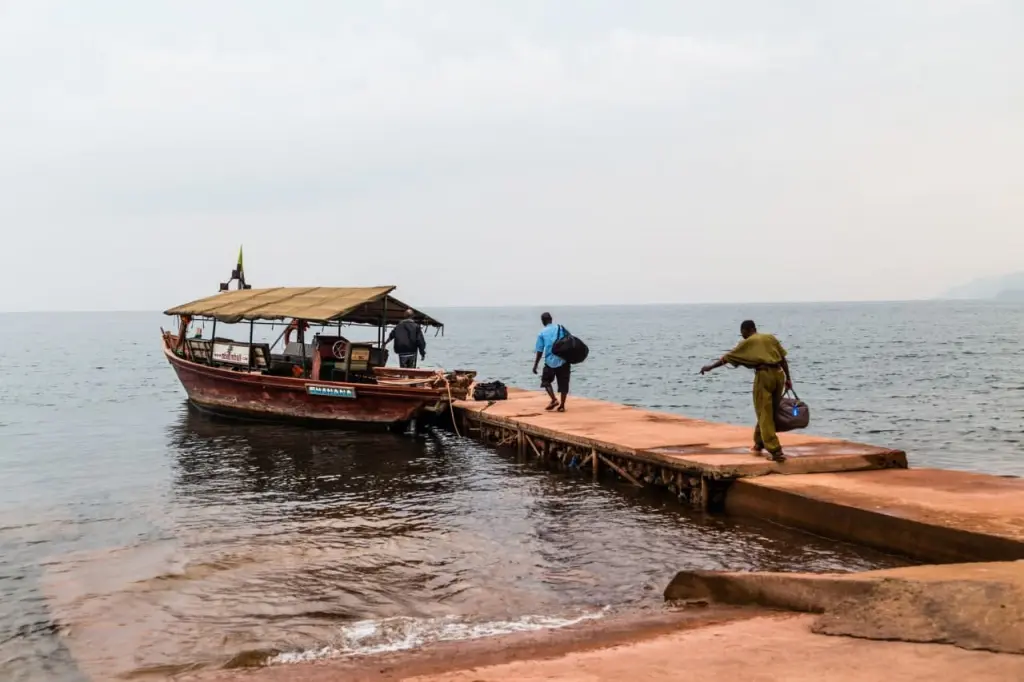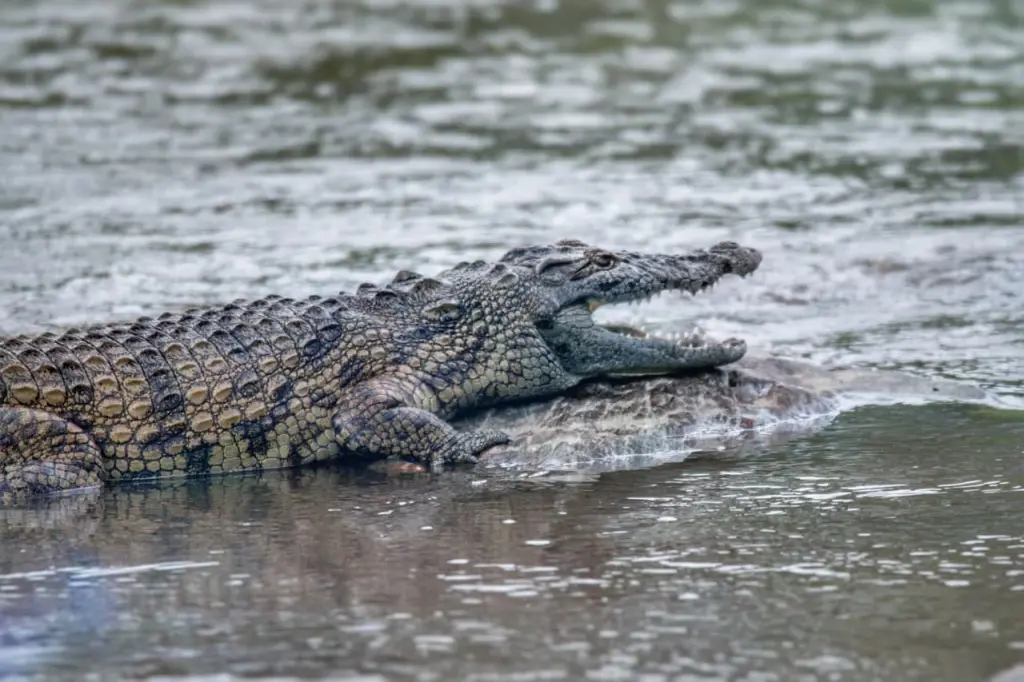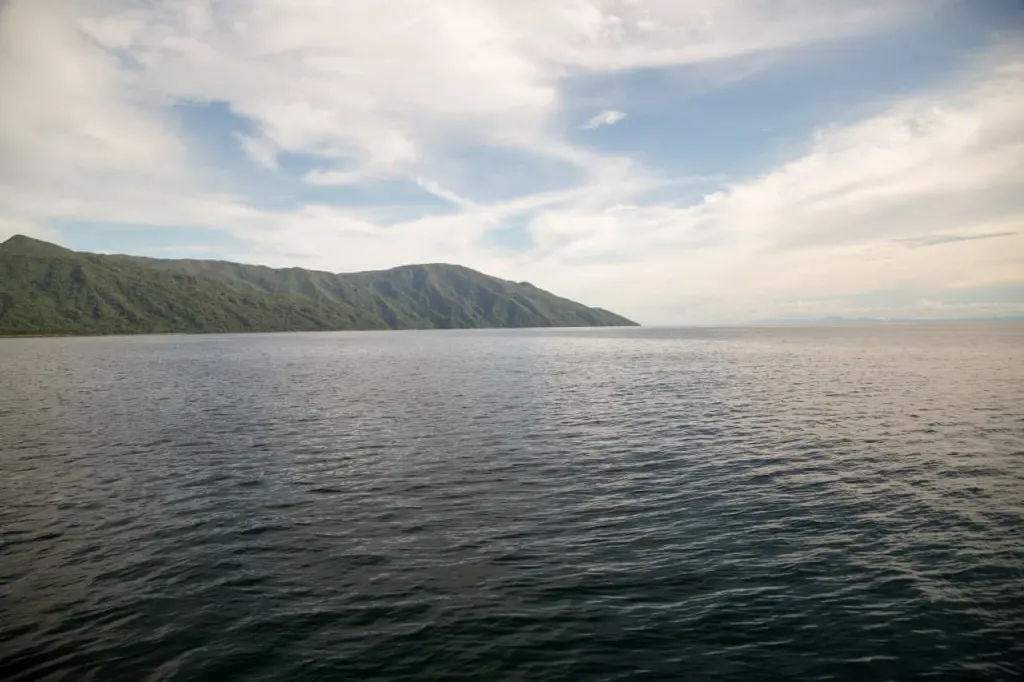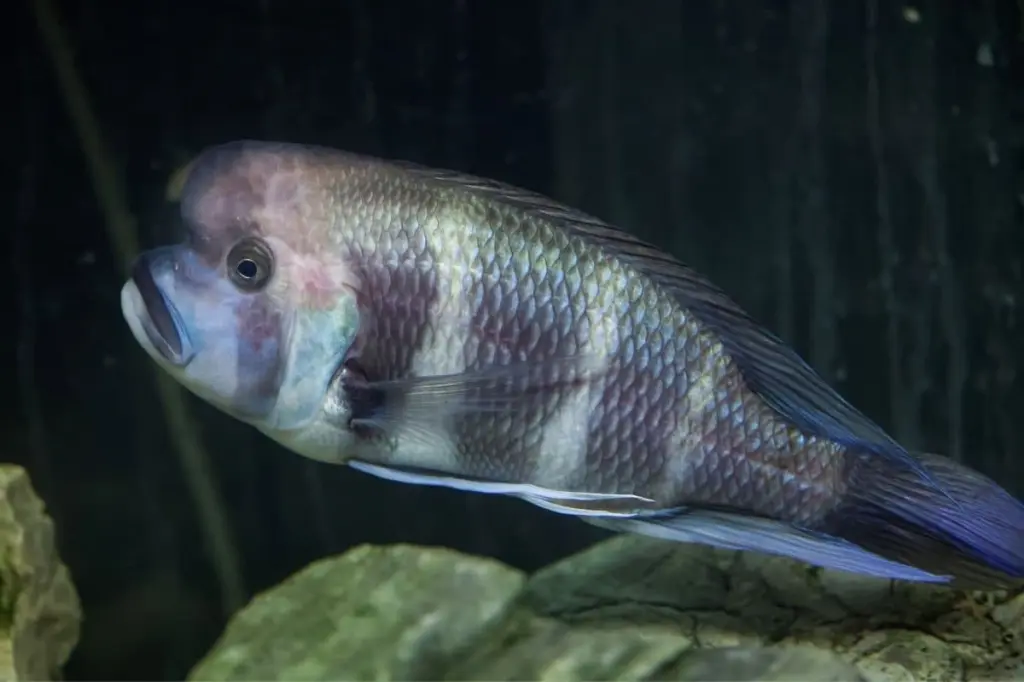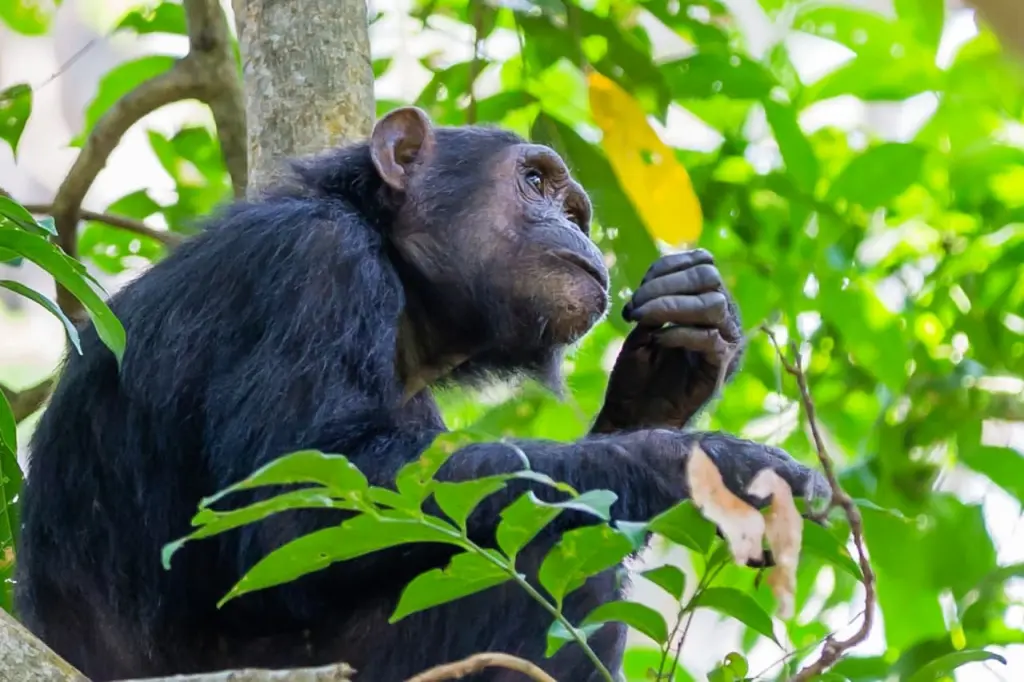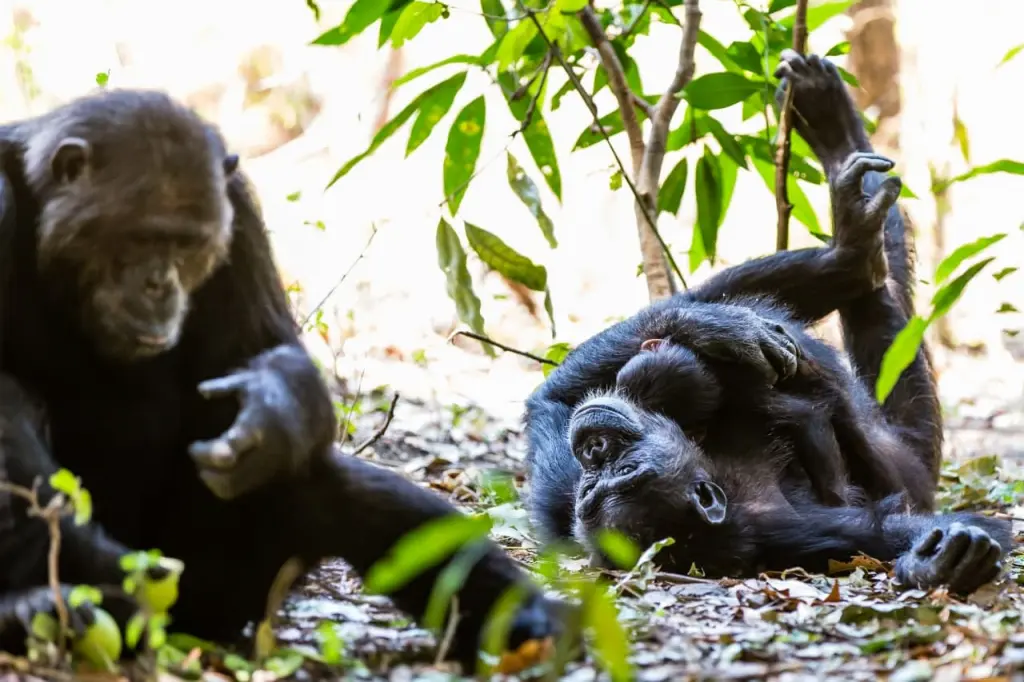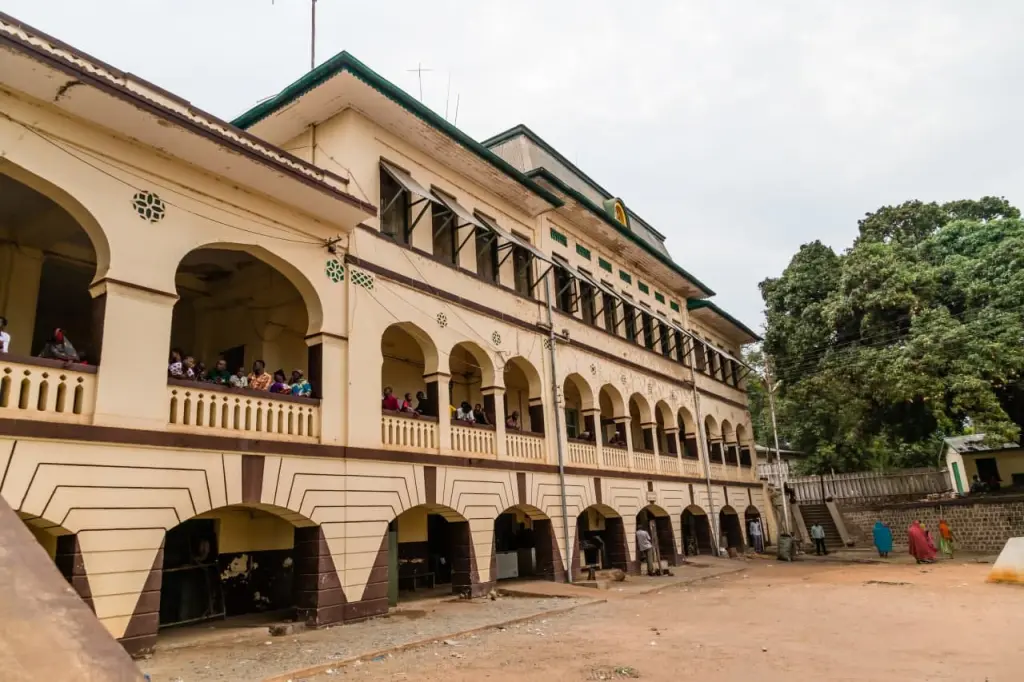Lake Tanganyika is one of the oldest freshwater lakes on the planet, a real miracle of nature. In the waters of Lake Tanganyika one can observe the wonders of evolution with their own eyes; diving in this lake means seeing endemic species of fish and other animals not found anywhere else in the world. To this day, scientists continue to study the waters of Lake Tanganyika. The maximum depth of the lake is 1,470 m, and only Lake Baikal in Siberia trumps Tanganyika in terms of depth. The shores of the lake are framed with beautiful sandy beaches and tropical forests.
Location and geography
The shoreline of Lake Tanganyika touches four African countries: Tanzania, the Democratic Republic of Congo, Burundi and Zambia. But Tanzania boasts the best views and the most convenient access to the lake. Tanzania also owns almost half of the waters of Tanganyika, and the shoreline around Tanzania has pleasant beaches with gently sloping sand. The shore on the DR Congo side, by comparison, is formed by rocky cliffs.
Lake Tanganyika is so huge that when you stand on its shore and look across, it seems like a calm sea in front of you. The average width of Lake Tanganyika is 50 km. But the most impressive part is that the lake is 676 km in length – from the northern to the southern tip. This is more than the distance between Paris and Milan – just imagine all this space filled with water! This makes Lake Tanganyika the longest freshwater lake on the planet.
The lake is rich in fish, and fishing is a popular activity for the local community. Besides regular freshwater fish caught for cooking, aquarium fish are also a common catch here. Dozens of moored boats, with fishing rods are a typical sight in this area.
Vast stretches of the shore are surrounded by real tropical forests that provide home for chimpanzees. Chimpanzees like to climb down to the waters of the lake, and you can observe them from the territories of national parks.
The largest settlement near Lake Tanganyika, within Tanzania, is the city of Kigoma. It has a population of over 200 thousand people and is a relatively poor, but interesting city. Among the attractions are the old buildings of the railway station, port facilities and a shipyard built in the colonial era. There is also a small museum dedicated to the research of the famous traveler David Livingston.
On the northern shore of Lake Tanganyika in the neighboring country Burundi, there’s the large capital city Bujumbura. To the west, in DR Congo, lies the city of Kalemie – the largest western port of Lake Tanganyika. These, and other small towns, are connected to Tanzanian Kigoma by river transport. The most striking among them is the famous German steamship Liemba (MV Liemba). Within its century-long history, it sank twice! After each instance, it stayed at the bottom of the lake for several years, but was eventually raised and renovated, and is now once again cruising with passengers around Lake Tanganyika. Read this incredible story, at the end of this article.
Things to do while on the lake
Africa’s deepest lake is sure to surprise you time and again with new discoveries. To find them, you might literally dive in, but you don’t have to - many of the exciting activities available are right on the surface of the water!
Walking and observing chimpanzees in the parks
The most popular type of recreation at Lake Tanganyika is to visit one of the national parks closely adjacent to the lake – Gombe Stream National Park and Mahale Mountains National Park. The dominant vegetation in both parks are beautiful natural rainforests.
The parks are home to hundreds of species of birds and mammals, predators among them. But of greatest interest are the primates living in these forests as families. The most common among them are chimpanzees, the closest relative of humans (more than a 90% genome match). Just imagine how exciting it is to watch our wild brethren in their natural habitat groom one another, play complex social games and interact in a variety of other ways!
The beaches of Lake Tanganyika
Besides walking with chimpanzees, you can indulge in a traditional beach holiday. There are several beaches in the city of Kigoma, and some of them are ideal spots to relax! Quiet sandy shores with clear and calm water, lodges with an authentic tropical ambience, walks by the lake under a canopy of tropical trees,and, finally, breathtaking sunsets. A paradise near the very center of the African continent.
However, it is important to only swim in the approved, safe beaches of Lake Tanganyika. In some sections of the lake there are dangerous animals, so make sure to go with a guide who is well-versed in the area and follow directions before entering the water..
Diving in Tanganyika
Tourist infrastructure outside the national parks is still in the first stages of development but fishing enthusiasts can find plenty of opportunities for motorized or manual boats. There are also diving centers that run underwater excursions to the beautiful colorful fish that abound in the waters of Tanganyika.
With the waters of the lake being mostly calm, it is an ideal place for beginners to get their first diving lessons. It’s best to start in shallow water. In some places, water transparency reaches 20 meters and higher, so even experienced divers will enjoy a visit to the inhabitants of the lake.
The water in the lake is very warm: the temperature fluctuates at around 24–28 °С, making dives comfortable and safe. Residents even joke that diving in Tanganyika is safer than taking local shuttle buses!
It’s important to keep in mind that the surface of the lake lies as high as 773 meters above sea level, so diving will take place virtually in high mountain conditions. Diving experience, or going with professional guides for your first experience is the best approach.
Lake Tanganyika is called a huge natural aquarium because of the many types of cichlids (a type of fish) that live here and nowhere else. In the waters of Lake Tanganyika, there are many different types of cichlids in an array of colors that brings even scientists from around the world. You can watch the beautiful cichlids up close in shallow water – dive only five meters deep and you will be surrounded with shoals of these colorful nimble fish!
Boating and fishing
You can always take a boat trip from the shore of the lake. Local guides will take you to the best spots accessible only by water. Nature here is untouched by man: :world of tropical vegetation and the richest diversity of the animal kingdom that you really must see for yourself.
Lake Tanganyika is also famous for sport fishing. In March-April, there’s a special fishing championship held on these shores. It is a perfect event to fish for fun. Besides, a great deal of the world’s beautiful aquarium fish are caught here and then dispatched to aquarium enthusiasts.
Among the highly prized “trophies” chased both by the local and visiting fishermen are "elephant" and "tiger". “Water elephant” is a name in the Hausa language for a Nile Perch. It’s about 0.5 meters long (over 1 and a half feet) and weighs 15 kg (33 lbs). The largest Nile Perch ever recorded was a massive 180 cm and 140 kg. “Tiger” is a giant tigerfish, also known as hydrocynus goliath – 1.5 meters in length, weighing 50 kg (110 lbs). The most impressive thing about this fish are the 32 canine teeth. They say that tigerfish are so aggressive they will even attack baby crocodiles.
What is Lake Tanganyika?
Lake Tanganyika is the oldest rift lake in Africa, formed during the movement of the two tectonic plates – the Arabian and the African ones which formed the Great Rift Valley and the huge water reservoir that we now call the African Great Lakes. Besides Tanganyika, among these lakes are: Lake Victoria, Lake Nyasa (Malawi), Lake Rudolf (now Turkana), Lake Edward (Rutanzige), Lake Albert and Lake Kivu.
Lake Tanganyika is also the deepest lake in Africa, with a maximum depth of 1471 m. On a global scale, it is the second deepest in the world, after Lake Baikal at 1642 m deep. The average depth of Lake Tanganyika is 570 meters. It is filled with the volume of freshwater that amounts to 18% of the total world's fresh water supply that humans have access to
What is the origin of the name Tanganyika
In the first version of the name’s origin, it is said that in one of the local languages of the region there is a phrase which sounds like “tanganyika” which basically means "a reservoir abounding with fish." According to other explanations of the origin, the word "Tanganyika" can be translated as "a plain-like lake" or "a huge lake stretching out like a plain." However, there can’t be a definitive version because multiple tribes have been settling by these shores for centuries, each with their own language and their own description of the lake.
It is also important to note that in the past, Tanganyika served as a name for the mainland of present-day Tanzania, when it was not yet an independent state and was ruled by Great Britain. The name “Tanzania” was formed by joining the names Tanganyika and Zanzibar, the two nations that joined to make up the United Republic of Tanzania.
How old is Lake Tanganyika?
By use of the reflected wave method, it was possible to establish when Lake Tanganyika began to form. According to seismic data, it happened 9-12 million years ago. In fact, this process continues to this day as the African Plate is slowly breaking apart just under the lake. In a few more million years, the tectonic plate will finally split, and East Africa will slowly float into the Indian Ocean. In this process, the current lake will get filled with sea salt water.
In general, Tanganyika has three basins of different age: the most ancient central one and younger southern and northern ones, some parts of the latter formed closer to the modern time (2 million years ago). As explorers were probing different areas of the lake, the age of Tanganyika would be determined with wide discrepancies, which caused confusion.
The final conclusion was made by geneticists. They examined the genomes of local fish and established their common ancestor. Judging by the so-called molecular clock, it lived right at the time of the lake formation.
Who "discovered" Tanganyika
Not wishing to propagate a one-sided Eurocentric view of the world, we will not delve into details of the "discovery" of Lake Tanganyika. It is obvious that people have lived here since ancient times – so long ago that this place probably saw the rise of Homo sapiens as species, considering that the Olduvai Gorge lies only 700 kilometers away from here.
Richard Burton and John Speke, brave British travelers and explorers, were the first Europeans to record their presence at the lake. They were trying to find the source of the great Nile and came to the waters of Tanganyika in 1858.
Tanganyika tributaries
Lake Tanganyika is formed by rain and several rivers. The largest of them, Ruzizi River, comes from the north, from the territory of Burundi. By the way, it is on the banks of the Ruzizi that the legendary cannibal crocodile Gustav is said to abide. Gustav is credited with killings of 300 people, and he even became the main character of the horror film “Primeval”.
The Malagarasi River also carries water to the oldest lake in the region. Malagarasi itself is older than Tanganyika, and before the formation of the lake it used to fall into the Congo River. Local tribes call it "the river of bad spirits." We do not recommend going there unprepared. It is better to check all details with our managers and choose one of the safe and reliable tours with Altezza Travel.
We will not list all the lesser tributaries of Lake Tanganyika here. Let's just say that only one river comes out of the lake – Lukuga River. Lukuga flows through the territory of the Democratic Republic of the Congo through the equatorial jungle and straight into the Congo River. And that one, in turn, fallls into the Atlantic Ocean.
Special features of Tanganyika
As you probably realized by now, Lake Tanganyika is unique and full of surprises. No matter who you are; an experienced traveler, scientist or researcher, everyone will be impressed with the exciting features of this incredible lake.
The layered waters
In the language of science, this phenomenon is called stratification, and stratified reservoirs are called meromictic. This is best translated into human language by the example of the Bloody Mary cocktail. First, we pour thick tomato juice into a glass, and then add some vodka on top. The layers won’t mix up due to the different densities of the liquids.
The same thing happens in Tanganyika. No, diving deeper will not get you to the tomato juice, quite the contrary. The top layer is oxygenated water, which constitutes a great environment for existence of live organisms. But 200 meters deeper and down to the very bottom lies a column of water containing hydrogen sulfide eliminating any possibility of life there. The deep waters of the lake are a natural cemetery, a hydrological monument of nature.
The water in the lake is getting warmer
According to some observations, over the past century, the average water temperature in the surface layers of the lake has increased by 2 °C. It's a rapid and significant jump. Water warming brings about changes in the life of organics. For example, the number of algae is decreasing, and more and more poisonous water hyacinth, also called a malicious weed, is appearing on the surface instead.
All of this leads to a decrease in fish in Lake Tanganyika. Countries with access to the lake, as well as international conservation organizations, are looking for solutions to protect the unique ecosystem of the ancient lake.
Lake Tanganyika – nature’s lab
Throughout its long history (millions of years), the lake has never dried up. And it’s almost always remained isolated from other water reservoirs. And even now, despite the outflow of water through the Lukuga River, the fish remain in the lake and do not enter the Congo River system.
It was this combination of conditions (isolation, vast volumes of fresh water, stratification, favorable climate) that produced a rare phenomenon within such a relatively small area - a large-scale formation of new species.
The unique fauna of Tanganyika
The fauna of the lake is made up of a great variety of species - more than 2 thousand in total. A large part of them have walked their evolutionary paths and are to be found only here, at the shores of Lake Tanganyika. Lake Tanganyika and its surroundings are a habitat for a great number of endemic species, and for this reason it is highly prized by both research biologists and rare-fish collectors.
Fish of Tanganyika
The most popular fish sought by anglers are types of sardines, sprat and the four types of perch, and all of them are considered to be endemic to Lake Tanganyika. In addition, catfish and eels inhabit these waters in a number of distinctive species. Even a unique type of poisonous pufferfish is found here.
But most of all, the lake is famous for fish from the cichlid family. At least 250 species of cichlids live here, and almost all of them are unique. Some species still remain unexplored, despite the ongoing scientific research happening within the waters.
Among the most beautiful and popular ones are:
- lobed cyphotilapia zebra ("Queen of Tanganyika");
- several types of tropheus;
- Julidochromis;
- many lamprologus, including the multi-striped lamprologus and Princess Burundi.
Aquarists around the world closely follow the research of the Tanganyika ichthyofauna, exchanging valuable information and, of course, hunting for rare colorful fish. Avid enthusiasts really want to get these beauties for their aquariums.
By the way, even more cichlids can be found in the neighboring lakes: Victoria and Nyasa (Malawi). In each of these reservoirs there are many of their own endemics.
Animals of Tanganyika
Dozens of snail species and other classes of mollusks are found in the lake. Many of them, again, are endemic. Besides mollusks, Lake Tanganyika has even bred its own species of jellyfish!
On the shallow bottom and the shore of Lake Tanganyika are literally crawling with crustaceans: there are at least two hundred species of them. These are crabs, shrimp and more thrive here. When it comes to the diversity of crustaceans and freshwater snails, no other African Great Lake can compare to Lake Tanganyika.
In terms of reptiles, there are Nile crocodiles, water cobras and some turtle species. All large animals, as a rule, avoid crowded places and prefer thickets, and the likelihood of meeting even a turtle, let alone a crocodile out in the open is highly unlikely. But there are monkeys that can sometimes be seen approaching the water.
National parks near Lake Tanganyika
As mentioned earlier, there are two national parks of Tanzania whose tropical forests border with the shore of Lake Tanganyika.
Gombe Stream National Park
The first one is the smaller Gombe Stream National Park nestled on the northeastern shore. Its area is only 71 km2. As a funny saying goes, “the number of chimps in the park is equal to the number of scientists watching them!”
Observing chimpanzees is the most popular activity here, and is over half a century old, making it a tradition now. It was in this park where the legendary primatologist and anthropologist Dr. Jane Goodall spent her entire professional life and overturned common public preconceptions about chimpanzees.The scientist is still actively advocating for animal rights, even though she is now about 90 years old.
Besides chimpanzees, you will also find here yellow baboons, red colobuses, vervets, blue and red-tailed monkeys. Hippos, leopards, bushbabies, honey badgers, bush pigs and a great variety of snakes and birds, including flamingos, also live in the park.
The landscapes here are amazing! Exotic eco-lodges of Gombe Stream are waiting for you to come visit.
Mahale Mountains National Park
To the south of Kigoma lies one of the most beautiful parks in Tanzania - Mahale Mountains National Park with an area of 1613 km2.
As the name implies, the park stretches along the coastal mountain range called Mahale. Its peak reaches a height of 2462 meters. The rainforest spreads over the mountains like a gentle natural blanket, giving all its inhabitants shelter, shade and an abundance of food. Local chimpanzees live here like real royalty, their life and habitat as it was a thousand years ago. The remoteness of the park makes it difficult to access because of the mountainous terrain, and without human involvement, chimpanzees have bred here in such numbers that no other Tanzanian park can boast.
It is all the more surprising that chimpanzees of Mahale Mountains get along with lions, also found in these areas. Hundreds of species of birds, porcupines and squirrels live in the park, and in the savannah areas lions, giraffes and zebras can also be seen.. However, visitors will not be able to get to the savannah because the way would lie through the dense vegetation of the forest with no proper roads.
Local residents were relocated from Mahale Mountains in the last century and now the region has almost returned to its primeval state.
The way to this park is unusual – you can get here only by boat! All movement around the coastal territory is possible only on foot, making a visit to Mahale National park a true adventure.
Port City of Kigoma
The main appeal of Kigoma as a city is as an access point to Lake Tanganyika and nearby National Parks. As a city, it is very simple, except for a few unique attractions.
To begin with, the city has a railway station, from where trains cross the country all the way to Dar es Salaam, Tanzania’s largest city, located along the coast of the Indian Ocean. For travelers seeking a faster journey, Kigoma also has a domestic airport.
If you are a fan of history and geography, it makes sense to drop by the small Livingston Museum and learn about the time when Africa was just in the beginning to be explored by Europeans. Here you can also pay respect to the statue of David Livingston, a brave traveler, missionary and humanist that spent extensive time in Tanzania.
And finally, we recommend dropping by the port.
The legendary ship "Liemba" (MV Liemba)
In the port of Kigoma, you can see a large ship, very old in appearance. Its long white hull, rectangular openings of the lower deck with handrails and protruding pipes suggest that you are facing a historic steamship. Actually, the MV Liemba is over 100 years old and is still in operation.
The German cargo-passenger steamer, then called Graf von Goetzen was launched in 1915. At the time, the First World War was raging, and the current mainland of Tanzania was under Germany rule. Germany needed military power on the waters of Lake Tanganyika to resist the combined opposing forces. Belgium, which ruled neighboring Congo, was the most immediate opponent.
That’s how the smooth surface of the ancient African lake was disturbed by a warship with real artillery pieces. Shots rang out and drama escalated as the warring sides fought on the waters of Lake Tanganyika.
After a year and a half, the Germans, being mostly defeated, had to retreat. A strategic decision was made to temporarily sink the Graf von Goetzen near the mouth of the Malagarasi River in order to return later and raise it from the bottom. German troopers lubricated the steamer's mechanisms with a thick layer of oil and sent it to the bottom. However, they did not return to Tanganyika because Germany lost the war.
In a couple of years, the Belgians raised the ship up, but another two years later, there was a storm that took the poor Graf von Goetzen to the bottom again.
Long peaceful service under the name "Liemba"
When the entire mainland territory of the present-day Tanzania was taken over by the British, the steamer was raised, restored and refitted for civilian needs. In 1927 the former German warship became known as the "Liemba" (MV Liemba), and its mission was proclaimed to be the peaceful transportation of goods and passengers across Lake Tanganyika.
As the years passed, things changed across the world, and in Tanzania, but on Lake Tanganyika, something remained unchanged for almost a century - the passenger ship MV Liemba. This previous warship continues to ply between Kigoma and other ports, and, thankfully, experts say that the ship is in good condition and will last for several more years.
We hope that MV Liemba will soon celebrate another centennial anniversary, as an exclusively peaceful steamship.
If you aren’t ready to take a cruise on the MV Liemba, then at least take a photo of the legendary ship in the port of Kigoma during your visit.
Tanganyika - the great African lake, waiting for a visit
Tanzania features many ancient landmarks, places that speak to where humans originated and how nature has changed over millions of years. Lake Tanganyika is one of these amazing places: where unique fish and marine life continue to evolve in the magical waters of the stratified lake, where chimpanzees teach us about nature, and where we humans can relax and enjoy it all at a slower pace.
Consider visiting amazing Lake Tanganyika during your trip to Tanzania.
The western region of Tanzania has great potential for development of ecotourism, and we are sure that it will very soon rise in popularity. Don’t wait for it to become a tourism hotspot, visit Lake Tanganyika and discover how amazing this lake is before everyone else.















